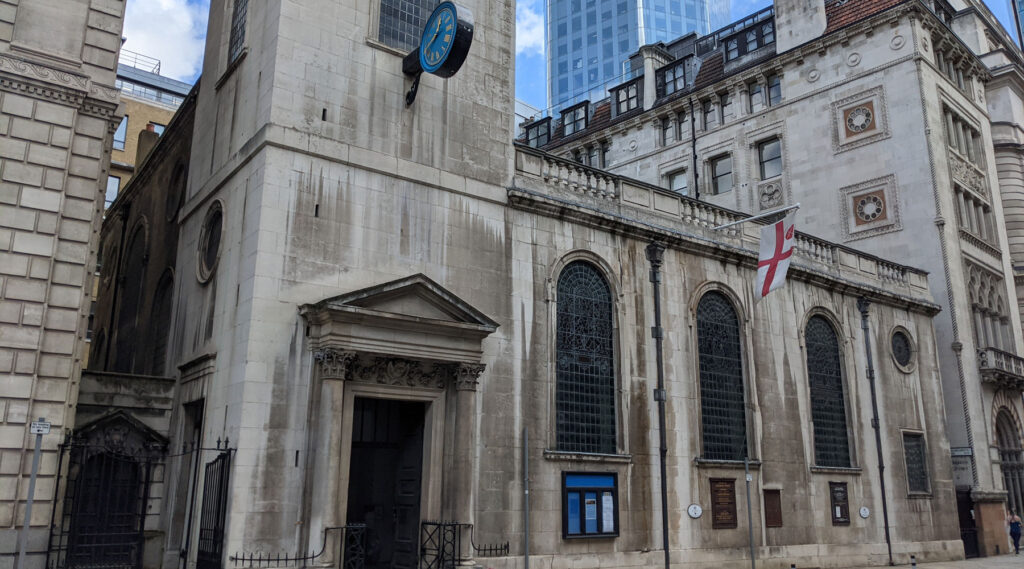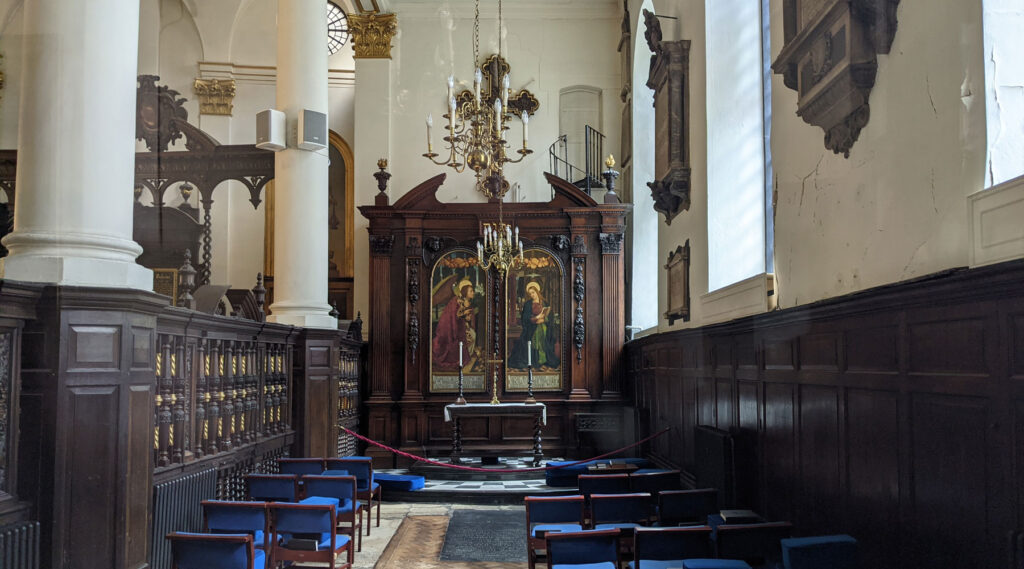A stone-clad church that can be found around the back of the Bank of England has been on this site since at least the 12th-century.
The earliest reference to the church dates to 1181, and the church lists simply “Reginald the priest” as being Rector that year. The next Rector listed is John De Hastingfield in 1303, so either the list is incomplete, or Reginald the Priest had an exceptionally long life. At the time the church and parish were part of the abbess and convent of Barking, Essex, which also owned a number of other churches in London at the time.
Rebuilt in 1440, and destroyed in the Great Fire of London, the current church is probably the third on the site — and is to a design by Sir Christopher Wren and Robert Hooke.
An oddity that’s very obvious when you walk in is that the building is not a perfect rectangle, and two-thirds of the far wall is slanted, seemingly due to another building next to the church when it was rebuilt that sat at an angle.
Over the recent 200 years, it’s been a bit of a magpie of a church, acquiring parishes from other churches that are to be demolished, and much of the interior decoration also came from those churches.
After all that, its official, if rarely used, name is now – St Margaret’s Lothbury, with St Christopher-le-Stocks, St Bartholemew-by-the-Exchange, St Olave, Old Jewry, St Martin, Pomeroy, St Mildred, Poultry, and St Mary Colechurch.
Phew!
Behind the ornate Choir Screen, acquired from the Church of All Hallows the Great are two paintings of Moses and Aaron flank the high altar, and they came from St Christopher le Stocks when it was demolished in 1781.
In the early 20th century, the church itself nearly joined the others and was nearly demolished on several occasions, only to be reprieved. The church sits on a plot of land described in 1913 as “the most valuable church site in the whole of London”, while at the same time, the need for churches was declining.
The church interior has changed a fair bit over the years, as the smaller chapel area used to be open to the rest of the church, and where the chapel altar is used to house the church organ. That’s now above the doors at the back of the church.
The font in the chapel used to be in the main church, and while unproven, is usually attributed to the master carver, Grinling Gibbons.
Something that’s a bit unusual for a church is that the stained glass windows are decorated not with biblical scenes, but the coats of arms of City Livery Companies. The church is a Guild Church, in that it provides religious service to the Livery Companies, so they donated the windows.
Early drawings also show the church minus its raised roofline. Whether that’s just not visible in the pictures, or the ceiling was raised later I am unable to find out. Something else that shows up in early drawings is that the church used to have a row of what look like shops in front of the main building, occupying space that is today the pavement.
Although you can’t get to it, there’s a decent-sized churchyard at the back as well.
The church is now open most days, and although the chapel is still closed, you can see it through the glass panelled doors.











I think I heard that the organ in the church was actually played by Felix Mendelssohn when he visited London in the middle of the C19. Possible I think as I believe the organ dates from around the first decade of that century.
Such an interesting article,thank you.Over the years I have walked past this church many times but never entered.Wish I had now as I’m retired and with weekend vehicle restrictions coupled to the ever increasing cost of rail travel from my home in the suberbs my ability to walk around London has been somewhat curtailed,something I used to love doing.The politicians have turned the capital into a virtual ‘no go’ area for the working class and their families.How stupid and tragic.